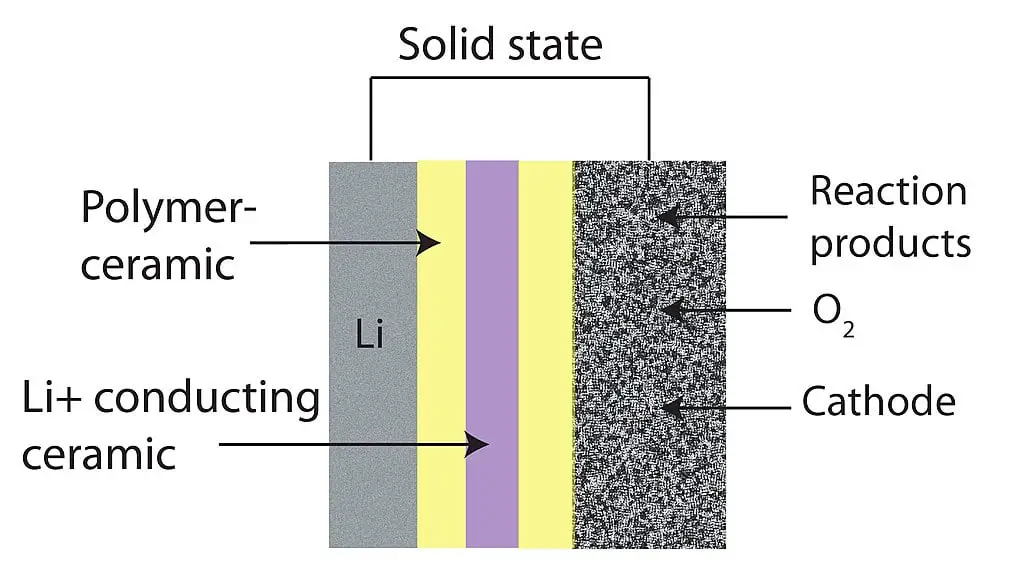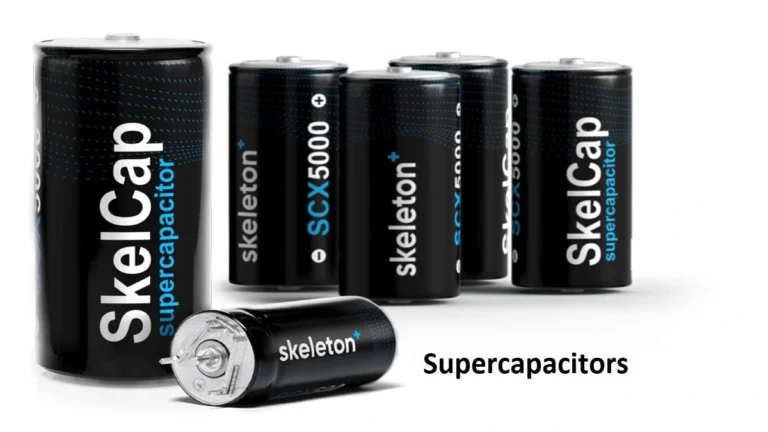Solid-state batteries have emerged as a promising technology in the field of energy storage, offering potential improvements over traditional lithium-ion batteries. With their unique composition and design, these batteries present an opportunity to enhance battery performance, safety, and energy density. In this article, we will explore the concept of solid-state batteries, their advantages and challenges, current research and development efforts, as well as their potential impact on various industries.
Page Contents
Understanding Solid-State Batteries
Thes batteries are a type of battery that replaces the liquid or gel electrolyte found in conventional lithium-ion batteries with a solid electrolyte. The solid electrolyte serves as a medium for the flow of ions between the battery’s cathode and anode, facilitating the movement of charge and enabling the battery’s operation. This solid-state design offers several advantages over traditional battery technologies.
Advantages of Solid-State Batteries
- Improved Safety: One of the significant advantages of these batteries is their enhanced safety. The use of a solid electrolyte eliminates the risk of electrolyte leakage, which can lead to thermal runaway and battery fires. These batteries are more stable and less prone to the formation of dendrites, which can cause short circuits and battery failure.
- Higher Energy Density: These batteries have the potential for higher energy density, meaning they can store more energy in the same volume or weight compared to conventional batteries. This increased energy density could lead to longer-lasting batteries and improved performance in portable electronics, electric vehicles, and renewable energy systems.
- Faster Charging and Discharging: These batteries may enable faster charging and discharging rates due to their unique composition and improved ion conductivity. This characteristic could revolutionize the charging time for electric vehicles, making them more convenient and comparable to refueling a traditional internal combustion engine vehicle.
- Wide Operating Temperature Range: These batteries exhibit better performance and stability across a wide range of temperatures, including extreme cold and hot conditions. This versatility makes them suitable for applications in aerospace, defense, and other industries where batteries may be exposed to varying environmental conditions.
Challenges and Current Research Efforts
While these batteries offer several advantages, there are still challenges to overcome before their widespread commercialization. Some of these challenges include:
- Manufacturing Scalability: Scaling up the production of solid-state batteries while maintaining cost-effectiveness remains a challenge. Developing efficient and reliable manufacturing processes for solid-state battery components is crucial to make them economically viable for large-scale adoption.
- Solid Electrolyte Conductivity: The ion conductivity of solid electrolytes needs to be further improved to match or exceed the performance of liquid electrolytes. Researchers are exploring various materials and structures to enhance ion mobility and achieve higher conductivity in solid-state batteries.
- Interfacial Stability: Ensuring long-term stability at the electrode-electrolyte interfaces is crucial for the durability and lifespan of solid-state batteries. Addressing issues related to interfacial resistance, degradation, and compatibility between materials is a focus of ongoing research efforts.
- Cost Reduction: Solid-state batteries currently involve the use of expensive materials and manufacturing techniques, making them cost-prohibitive for mass adoption. Advancements in materials engineering, manufacturing processes, and economies of scale are necessary to drive down the cost of solid-state batteries.
To address these challenges, researchers and companies worldwide are actively engaged in developing and optimizing solid-state battery technologies. They are exploring various materials, including solid electrolytes and electrode materials, and investigating novel cell designs and manufacturing methods to improve performance, safety, and cost-efficiency.
Potential Impact on Industries
The development and commercialization of solid-state batteries have the potential to impact various industries:
- Electric Vehicles: These batteries could revolutionize the electric vehicle (EV) industry by addressing some of the limitations of traditional lithium-ion batteries. With their higher energy density, faster charging capabilities, and improved safety, solid-state batteries could significantly enhance the range, performance, and overall user experience of electric vehicles. They have the potential to eliminate range anxiety, reduce charging times, and increase the adoption of electric vehicles on a larger scale.
- Consumer Electronics: These batteries can also have a significant impact on the consumer electronics market. With their higher energy density, devices such as smartphones, laptops, and wearables could benefit from longer battery life and improved performance. Faster charging rates would provide more convenience for users, allowing them to spend less time connected to power outlets.
- Renewable Energy Storage: These batteries offer potential advancements in renewable energy storage systems. They can store excess energy generated from renewable sources, such as solar and wind, for later use. The higher energy density and improved efficiency of solid-state batteries could help enhance the integration of renewable energy into the grid, increase grid stability, and promote a more sustainable energy future.
- Aerospace and Defense: The aerospace and defense industries can benefit from the safety, stability, and wide temperature range of solid-state batteries. These batteries can provide reliable power for spacecraft, satellites, and unmanned aerial vehicles (UAVs) operating in extreme environments. The improved performance and enhanced safety features make solid-state batteries an attractive option for critical applications in these industries.
- Medical Devices: These batteries hold promise for medical devices, particularly implantable devices such as pacemakers and neurostimulators. The higher energy density and longer lifespan of solid-state batteries could reduce the need for frequent battery replacements and enhance the overall performance and reliability of these life-saving devices.
Frequently Asked Questions (FAQs)
Q. Are solid-state batteries available for commercial use now?
A. While solid-state batteries are still in the research and development phase, some companies have made progress in commercializing this battery technology. However, widespread adoption and availability of these batteries in consumer products are still a few years away.
Q. Can solid-state batteries completely replace lithium-ion batteries?
A. These batteries show promise in surpassing the performance of lithium-ion batteries, but there are still challenges to overcome before they can completely replace them. Both technologies are likely to coexist, with these batteries gradually gaining more prominence as their technology advances.
Q. Are solid-state batteries more environmentally friendly than lithium-ion batteries?
A. Yes, these batteries have the potential to be more environmentally friendly than traditional lithium-ion batteries. They eliminate the need for toxic and flammable liquid electrolytes, reducing the risk of environmental contamination. Additionally, solid-state batteries can use sustainable and abundant materials, making them a greener option for energy storage.
Q. How long does it take to charge a solid-state battery?
A. The charging time for solid-state batteries depends on several factors, including the specific battery design, charging infrastructure, and charging protocols. While these batteries have the potential for faster charging rates, the development of compatible charging infrastructure will be necessary to achieve their full potential.
Q. What is the expected timeline for the widespread adoption of solid-state batteries?
A. The timeline for widespread adoption of these batteries will depend on the progress of research and development efforts, manufacturing scalability, and cost reductions. While some commercial applications may emerge in the coming years, it may take a decade or more for solid-state batteries to be in fully in large scale production.







